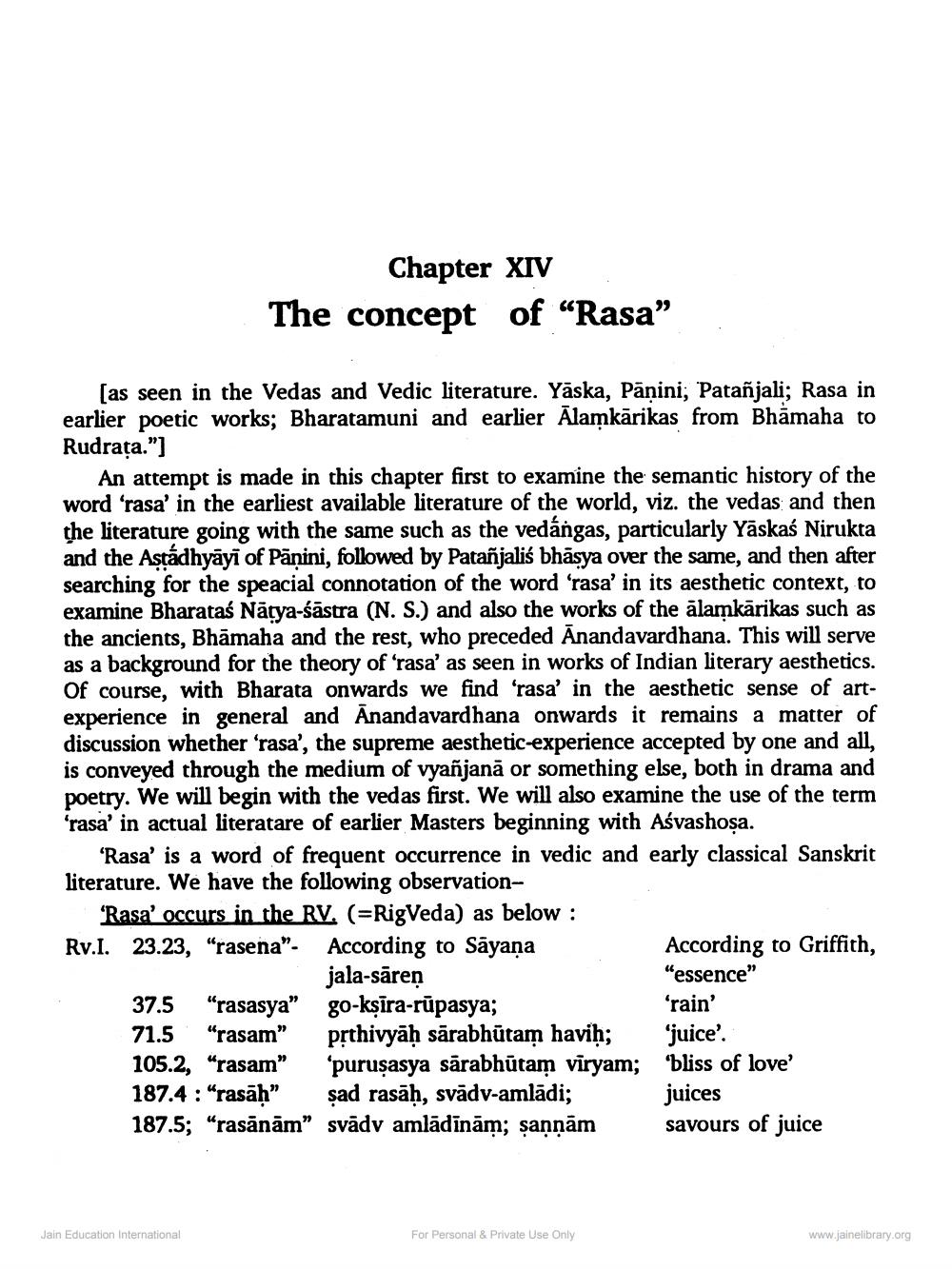________________
Chapter XIV The concept of “Rasa”
[as seen in the Vedas and Vedic literature. Yāska, Pānini; Patañjali; Rasa in earlier poetic works; Bharatamuni and earlier Alamkārikas from Bhảmaha to Rudrata."]
An attempt is made in this chapter first to examine the semantic history of the word 'rasa' in the earliest available literature of the world, viz. the vedas and then the literature going with the same such as the vedángas, particularly Yāskaś Nirukta and the Astädhyāyi of Pānini, followed by Patañjaliś bhāsya over the same, and then after searching for the speacial connotation of the word 'rasa' in its aesthetic context, to examine Bharataś Nātya-śāstra (N. S.) and also the works of the alamkārikas such as the ancients, Bhāmaha and the rest, who preceded Anandavardhana. This will serve as a background for the theory of 'rasa' as seen in works of Indian literary aesthetics. Of course, with Bharata onwards we find 'rasa' in the aesthetic sense of artexperience in general and Anandavardhana onwards it remains a matter of discussion whether 'rasa', the supreme aesthetic-experience accepted by one and all, is conveyed through the medium of vyañjanā or something else, both in drama and poetry. We will begin with the vedas first. We will also examine the use of the term 'rasa' in actual literatare of earlier Masters beginning with Aśvashosa.
'Rasa' is a word of frequent occurrence in vedic and early classical Sanskrit literature. We have the following observation
'Rasa' occurs in the RV. (=Rig Veda) as below : Rv.I. 23.23, “rasena". According to Sāyana
According to Griffith, jala-sāren
"essence" 37.5 "rasasya” go-kşīra-rūpasya;
‘rain' 71.5 “rasam" prthivyāḥ sārabhūtam haviḥ; 'juice'. 105.2, "rasam" 'purusasya sārabhūtam vīryam; "bliss of love' 187.4 : “rasāḥ” şad rasāḥ, svādv-amlādi; juices 187.5; "rasanām” svādv amlādīnām; sannām savours of juice
Jain Education International
For Personal & Private Use Only
www.jainelibrary.org




